This article is excerpted from the book “Bai Nian Cheng Shi Series Acupoint Pain Relief”.
Published by: China Medical Science and Technology Press
A common cold is an external pathogenic disease characterized by symptoms such as headache, nasal congestion, aversion to wind, and fever. It often occurs due to cì lǐ bù gù (deficiency of the protective layer), which means a weakened defense capability of the skin and muscles, allowing external pathogens to invade the body, and can occur in all seasons. Due to seasonal climate changes and different pathogenic factors, or due to variations in constitution, it can be classified into three main categories: fēng hán (wind-cold), fēng rè (wind-heat), and shǔ shī (summer-heat dampness).
01Wind-Cold Common Cold
The wind-cold common cold is caused by the invasion of cold pathogens, leading to obstruction of lung qi and closure of the pores.
Typical Symptoms: Nasal congestion, clear nasal discharge, aversion to cold, slight fever, no sweating, tightness in the neck, headache, and body aches.
Etiology: The nose is the orifice of the lungs, and experiencing cold with clear nasal discharge is a manifestation of insufficient defensive qi, often being one of the primary symptoms of the onset of a wind-cold common cold. The key point of this syndrome is “cold”. Cold is a yin pathogen that easily injures yang qi, hence the clear nasal discharge indicates damage to the defensive yang, leading to aversion to cold and heavy cold sensations due to the loss of warmth from the defensive yang; the cold nature causes no sweating due to the closure of the pores, and tightness in the neck and body aches are due to the contraction of the muscles and obstruction of qi and blood flow caused by cold. The treatment principle is to warm yang and disperse cold.
Treatment
(1)Dà Zhuī is the acupoint of the Governing Vessel, which has the function of regulating and supervising all yang channels, hence it is referred to as “the governor of all yang” and “the sea of yang channels”. All three yang channels of the hands and feet converge at the Dà Zhuī acupoint, thus it is called “the yang among yang”. By providing appropriate stimulation to Dà Zhuī, one can revitalize yang qi and expel pathogens to prevent disease, invigorating the spirit!
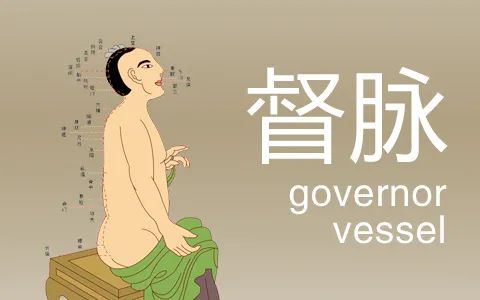
In addition to rubbing the Dà Zhuī, one can also use moxibustion on Dà Zhuī, either through suspended moxibustion or ginger moxibustion. For those who find it inconvenient or do not know how to use moxibustion, they can use a hot towel to apply heat to Dà Zhuī, or increase the water temperature while bathing, directing hot water at Dà Zhuī for 5-6 minutes continuously, which is also quite effective. By applying warm stimulation to Dà Zhuī through hot water, it replaces the effect of moxibustion, warming the yang of Dà Zhuī, thus warming the entire body’s yang. With sufficient yang qi, one can dispel cold and naturally alleviate symptoms.
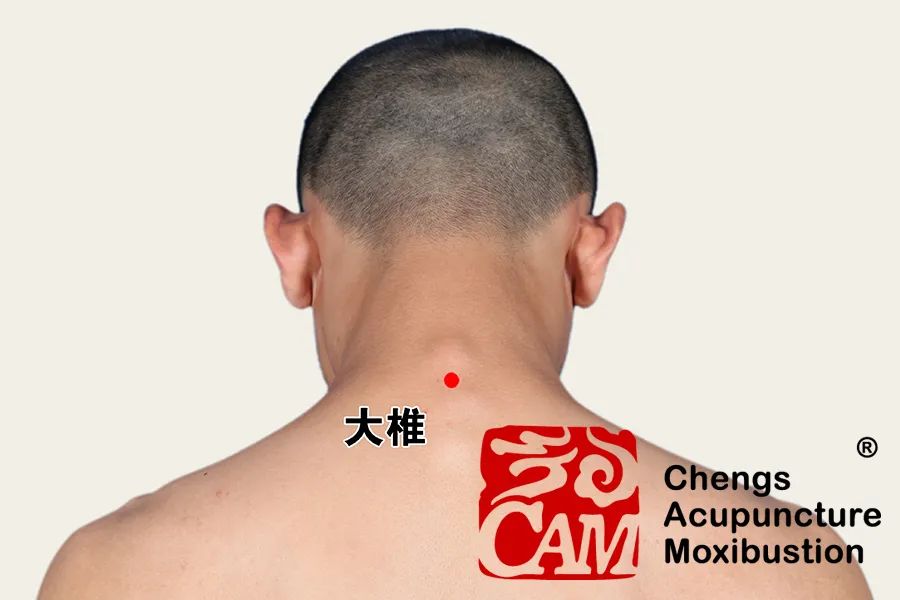
(2) Besides Dà Zhuī, one can also rub or warm moxibustion on Fēngmén and Lung Shū acupoints.
Fēngmén is located on the back, 1.5 cun lateral to the spinous process of the second thoracic vertebra.
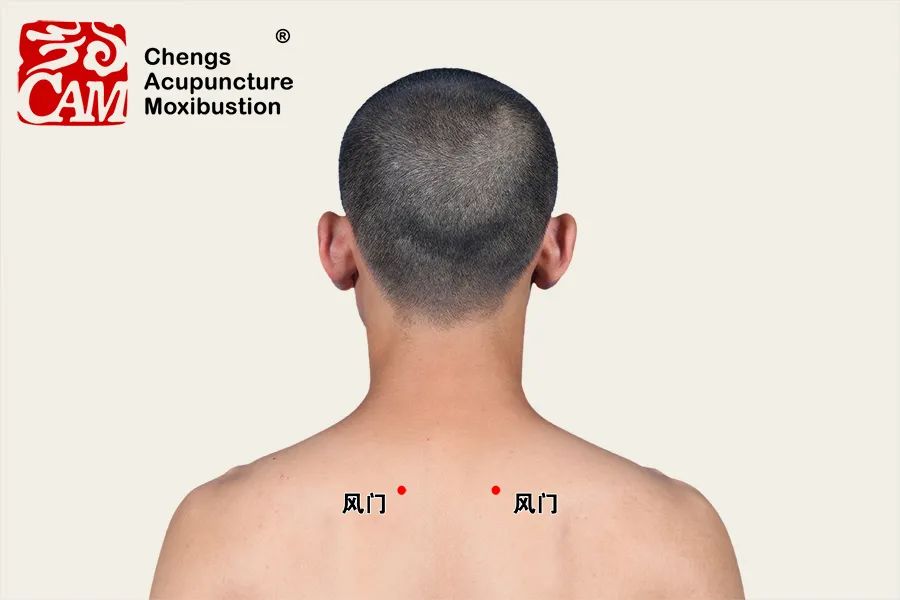
Lung Shū is located on the back, 1.5 cun lateral to the spinous process of the third thoracic vertebra. Both acupoints correspond to the lungs and are used to treat external pathogenic diseases.
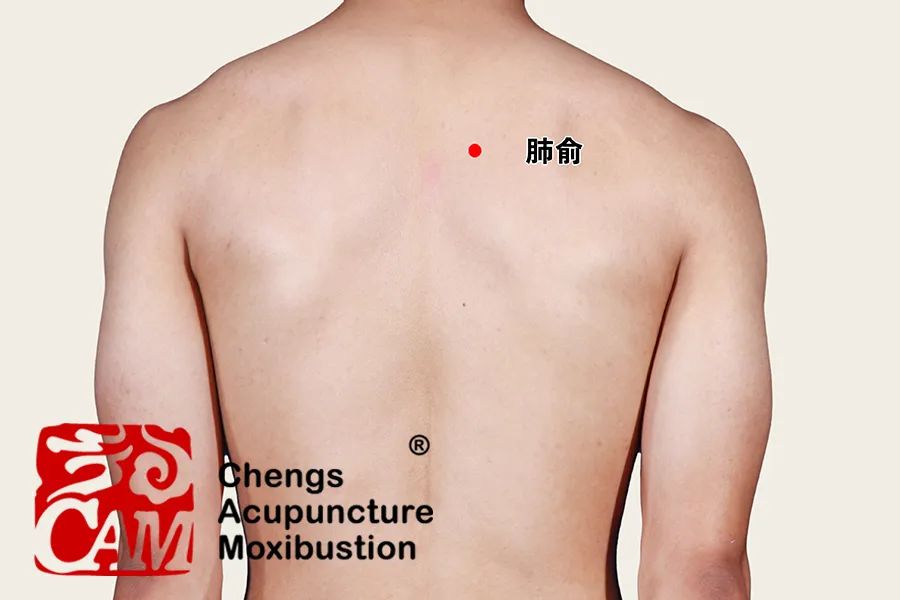
02Wind-Heat Common Cold
The wind-heat common cold is caused by the invasion of wind-heat pathogens, leading to upward steaming of the pathogenic heat, loss of the lung’s ability to clear and disperse, and abnormal functioning of the skin and pores.
Typical Symptoms: High fever, yellow nasal discharge, aversion to heat, and sore throat.
Etiology: The key point of this syndrome is “heat”. Pathogenic heat injures the body, often presenting with high fever; the lung’s ability to clear is lost, leading to yellow nasal discharge, and the lung meridian (throat) shows swelling and pain. The treatment principle is to release the exterior and clear heat.
Treatment
(1)Dà Zhuī is where the yang channels converge. When external wind-heat pathogens invade, it is also where yang pathogens gather. Bloodletting and cupping at this point, compared to rubbing and warming moxibustion, is a strong stimulation method, suitable for clearing and draining yang pathogens.
(2)Lung Shū is the back-shu point of the lungs, bloodletting and cupping here also serves to release the exterior and clear heat.
(3)Ear Apex is an extraordinary acupoint, effective in clearing heat from above, with a rapid and significant effect in reducing fever, especially when body temperature exceeds 39°C, bloodletting can be performed.
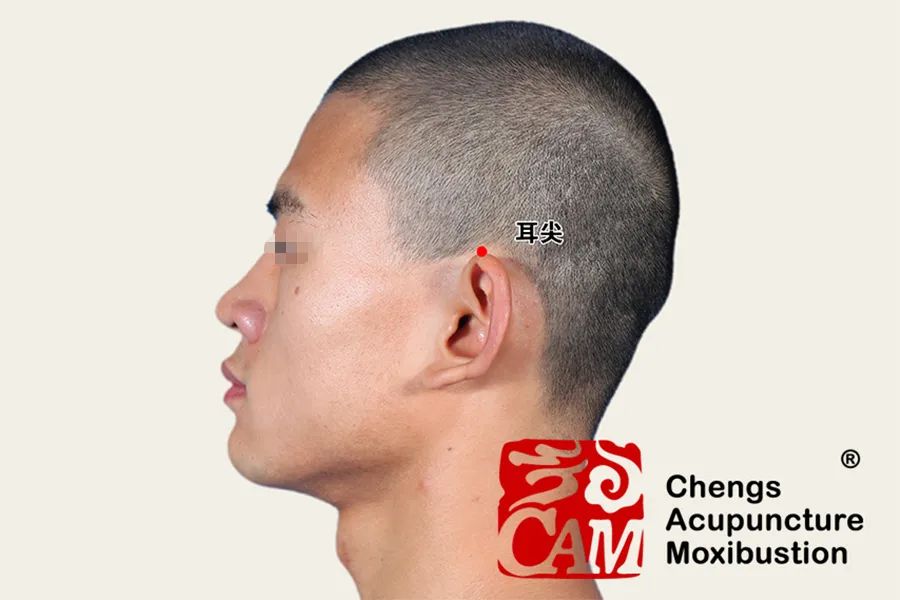
It is important to note that prolonged wind-cold can lead to the invasion of the interior, transforming into heat symptoms. As long as the symptoms align with wind-heat, treatment should follow the aforementioned methods. It is essential to understand that diseases are constantly evolving, and treatment must be adjusted according to the current situation, which is why traditional Chinese medicine emphasizes syndrome differentiation and treatment.
Moreover, due to differences in patient constitution and the interaction of internal and external factors, the symptoms after pathogen invasion can vary. For instance, those with a constitution of yang deficiency often present with wind-cold; those with yin deficiency often present with wind-heat. Even if one is initially affected by wind-cold, if there is internal stagnation or heat, the symptoms may quickly manifest as wind-heat.
This explains why children often exhibit high fever and convulsions after external pathogenic invasion. Children have a vigorous yang constitution, and when their growth and development are rapid, irregular eating can lead to stagnation. Although the seasonal climate is often cold, when they are affected by wind-cold, their constitution can quickly transform it into heat symptoms, hence the frequent use of cold remedies targeting wind-heat symptoms in children.
03Summer-Heat Dampness Common Cold
The summer-heat dampness common cold, also known as summer cold, occurs during hot and humid summer months. During this time, people often seek coolness, such as using air conditioning, which can lead to the invasion of wind-cold pathogens, causing the internal summer-heat dampness to be restrained, obstructing the flow of qi and leading to illness.
This disease primarily affects the skin and the middle jiao (spleen and stomach), with symptoms manifesting both internally and externally. Externally, there is fever without significant elevation, and a feeling of heaviness in the head and body; internally, there is chest and abdominal fullness, disharmony of the spleen and stomach, digestive dysfunction, rapid pulse, dry mouth with little thirst or sticky mouth, and a tongue coating that is greasy but not yellow, with loose stools.
The key point of this syndrome is “internal-external combination”. Summer heat is a yang pathogen, characterized by heat, and after invading the body, it often presents with obvious yang heat symptoms, such as high fever and thirst. However, when summer heat is combined with dampness, the heat does not disperse well, leading to fever without significant elevation, and the dampness is heavy and turbid, causing a feeling of heaviness in the head and body, akin to being covered with a heavy, non-breathable wet cloth while having a fever. Since external pathogens often invade the yang position of the body, the head is considered the upper part, thus it is often described as feeling heavy like being wrapped.
At the same time, dampness is a yin pathogen that can obstruct the flow of qi and damage yang qi, leading to symptoms of chest tightness and abdominal fullness. The abdomen refers to the stomach area, and fullness refers to the gas blocks formed by qi stagnation, which can be intermittent. The stomach is located in the middle jiao, and if the qi flow is obstructed, the upper and middle jiao will not communicate, resulting in chest tightness. Since the spleen prefers dryness and dislikes dampness, dampness can easily damage spleen yang, leading to spleen yang being constrained, poor transformation and transportation, and thus digestive issues such as disharmony of the spleen and stomach, loss of appetite, and loose stools.
Since symptoms manifest both internally and externally, treatment should combine internal and external approaches.Wai Guan is an acupoint of the hand’s Shao Yang Sanjiao channel, which can promote qi, benefit water metabolism, relieve summer heat, and dispel dampness to treat the exterior;
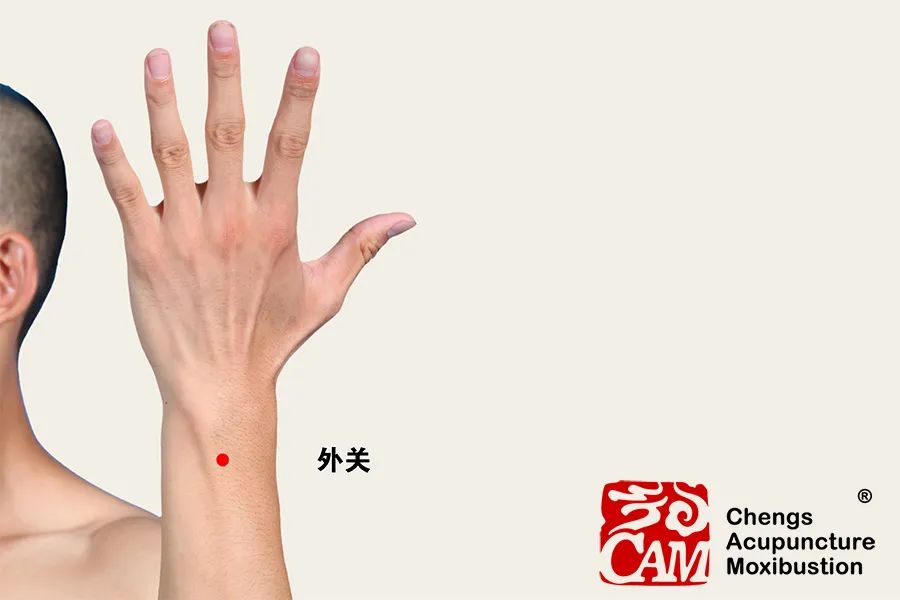
Nei Guan is an acupoint of the hand’s Jue Yin Heart Pericardium channel, which can harmonize the stomach, descend rebellious qi, and relieve chest tightness to treat the interior.
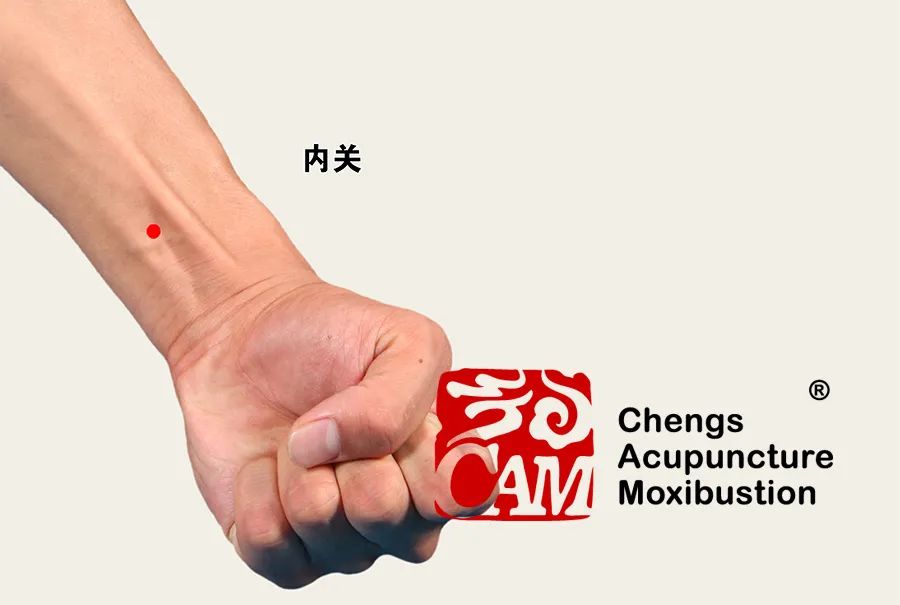
Both acupoints are connecting points, with corresponding internal and external locations, and simultaneous pressing can connect internal and external, treating both simultaneously. If heat is significant, Dà Zhuī can be added, and the stimulation methods can refer to those for wind-heat common cold.

Text | Cheng’s Acupuncture
Images | Cheng’s Acupuncture
For reprints, please contact us for authorization

■ ■■■■
Long press the QR code to follow us immediately
“

Cheng’s Acupuncture Subscription Account

Da Cheng Traditional Chinese Medicine Service Account

